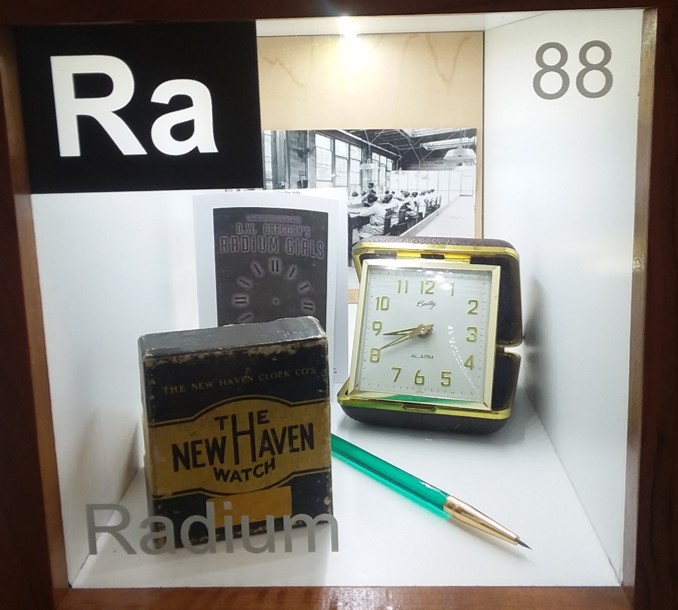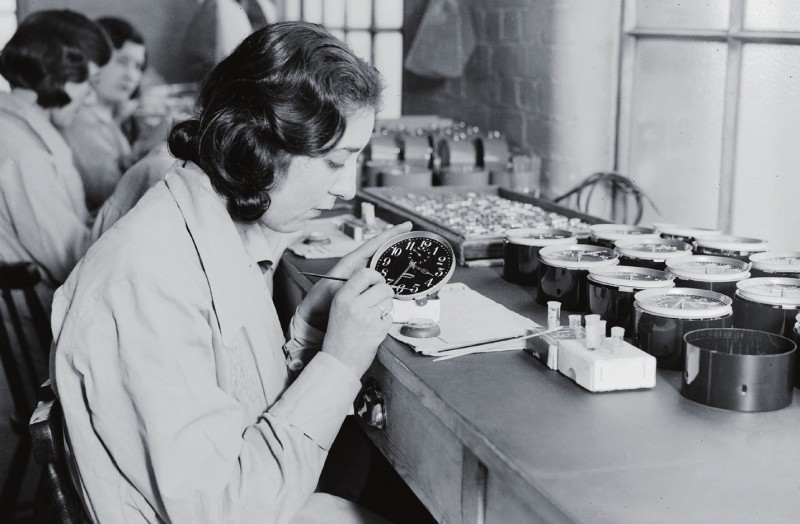Radium
 Contributor: Joseph E. Slater
Contributor: Joseph E. Slater
About Radium: The “radium girls” were a group of women workers who contracted often-fatal radiation poisoning from brushes they used to paint watch components in U.S. Radium Corporation factories in Orange, New Jersey and Ottawa, Illinois. beginning around 1917. The paint contained radium. While radium is only faintly radioactive, the women were told to lick their paintbrushes to give them finer points. This lead to lawsuits that were influential in the early stages of workplace safety law in the U.S.
Evidence shows that the company knew of the risks to the workers, but concealed them. Meanwhile, the workers became increasingly sick. Some sued. They faced great difficulties due to delays and legal rules limiting recoveries against employers to accidental injuries and not including occupational diseases. Still, one case, brought by Grace Fryer, Edna Hussman, Katherine Schaub, Quinta McDonald, and Albina Larice, settled in 1928 with each woman receiving $10,000, a $600 yearly annuity for life, and medical expenses. Another case brought by Catherine Donahue finally succeeded after eight appeals in 1939.
The Consumers’ League, a women’s voluntary society committed to improving working conditions for women and children, provided much-need assistance in the litigation.These events helped spur early workplace safety guidelines, as the League persuaded the US Public Health Service in 1933 to recommend safety practices in this area. Still, radium paint was used in watch dials as late as the 1960s. These events have been described in both historical works, notably Claudia Clark, Radium Girls: Women and Industrial Health Reform, 1910-1935 (UNC Press, 1997) and in the play “Radium Girls” by D.W. Gregory.
Read more about the Radium Girls' role in shaping the Labor Laws of the United States: http://www.voanews.com/a/radium-girls-remembered-for-role-in-shaping-us-labor-law-129169888/144746.html

Pictured: Grace Fryer painting a radium clock. Picture from Messy Nessy
About the Contributor: Joseph E. Slater is the Eugene N. Balk Professor of Law and Values at the University of Toledo College of Law
Back to the Periodic Table
| |-Onward to the next element!> |
Symbol: Ra
Atomic Number: 88
Atomic Mass: 226 u
Electron Configuration: [Rn] 7s2
Year Discovered: 1898
Discovered By: Marie and Pierre Curie


